Asking a trainer about learning styles is comparable to asking a fraternity/sorority advisor if they teach keg-tapping. It’s a tempting idea, but it makes about as much sense as believing in bigfoot or tryptophan. Like these examples, the myth is interesting and popular, but the evidence is elusive (Curry, 1990).“Although the literature on learning styles is enormous, very few studies have even used an experimental methodology capable of testing the validity of learning styles applied to education. Moreover, of those that did use an appropriate method, several found results that flatly contradict the popular meshing hypothesis” (Pashler, McDaniel, Rohrer, & Bjork, 2008, p. 105).
"More critically, although it is easy to find studies suggesting that students differ in their preferred learning style, it is difficult to find studies showing that teaching to individual learning styles actually makes in difference in student learning outcomes” (Alferink, 2007, p. 49). In Evidence Based Training Methods (2010), Ruth Colvin Clark cites research that contradicts the concept of learning styles. Two researchers evaluated the impact of preferred styles on learning outcomes found that “in contrast to learning style theory, it appears that people are able to learn effectively using all three sensory modalities” (Kratzig & Arbuthnott, 2006, p. 241). Clark also shares evidence from a similar study that measured sensing versus intuiting styles in medical students that found “there was no association between learning style and instructional method” (Clark, 2010, p. 11).
For many, this will come as a surprise, so before you retaliate with your passionate comments, please consider the following points:
Preference v. Effectiveness It's true that you may prefer to learn by reading, listening, or experimenting, but that does not mean it is the most effective method.
N=1, or “But I am different!” The myth is easy to believe because it speaks to our need to feel unique. In reality, your brain processes, encodes and stores information in much the same process as mine and everyone else’s. Any differences are so slight that they are not worth considering when selecting teaching methods.
Experience v. Potential Our sense about what works is often based on our past experience as learners. Thanks to our school system and preference for PowerPoint, that experience is far from a reliable source. Furthermore, with additional evidence in neuroscience and training, we are likely to discover new and better techniques.
Processing v. Encoding Our brains have a place for processing incoming information. It lasts for 15-20 seconds, can hold about 3 items, and involves both an auditory and visual channel (we are all auditory AND visual learners). Our brains also encode that information into long term memory. This memory is more permanent, and is stored in context of our preexisting knowledge. It is important to differentiate the processing function, the encoding function, and the storage function when studying which modes are most effective. Rather than chasing the learning styles myth, we would be wise to invest in addressing the learner’s prior knowledge, ability and motivation (Stolovich & Keeps, 2002). Additionally, evidence suggests that more significant gains in learning are achieved by aligning teaching techniques with knowledge about how the brain functions (see Processing v. Encoding above) (Clark, 2010; Medina, 2008; & Stolovich & Keeps, 2002).
Ultimately, if we care about the success of our learners, we must verify that the techniques we use have a scientific basis. For more evidence and instructional design advice, consider the following references and resources:
Alferink, L. A. (2007). Education and superstitious practice. In B. K. Saville, T. E. Zinn, S. A. Meyers, & J. R. Stowell (Eds.), Essays from E-xcellence in Teaching, 48-52.
Clark, R. C. (2010). Evidence-Based Training Methods: A Guide for Training Professionals. Alexandria, VA: ASTD Press.
Curry, L. (1990). A critique of the research on learning styles. Educational Leadership, 82, 50-56.
Kratzig, G. P., & Arbuthnott, K. D. (2006). Perceptual learning style and learning proficiency: A test of the hypothesis. Journal of Educational Psychology, 98, 238-46.
Medina, J. J. (2008). Brain Rules: 12 Principles for Surviving and Thriving at Work, Home and School. Seattle, WA: Pear Press.
Pashler, H., McDaniel, M., Rohrer, D., & Bjork, R. (2008). Learning styles: Concept and evidence. Psychological Science in the Public Interest, 9(3), 105-119.
Stolovich, H. D., & Keeps, E. J. (2002). Telling Ain’t Training. Alexandria, VA: ASTD Press.
